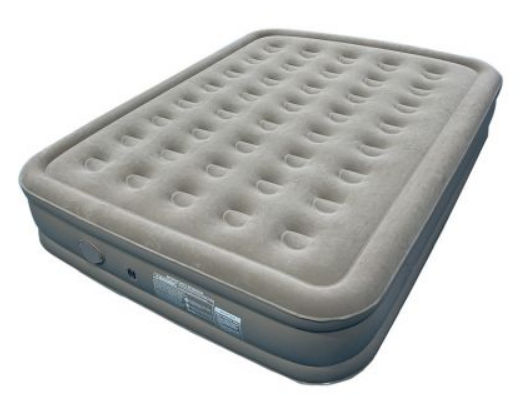The Ultimate Guide to Choosing the Perfect Air Mattress
This article aims to provide comprehensive information about air mattresses, detailing their materials, types, functionalities, and important purchasing considerations.
Key Takeaways:
- Air mattresses are ideal for temporary use, such as travel, camping, or hosting overnight guests.
- Raised air mattresses mimic the height of traditional beds, offering greater comfort. Self-inflating models feature built-in pumps for automatic inflation, while manually inflatable mattresses require an external pump.
- The main advantages of air mattresses include portability, affordability, and customizability. However, they may not be as reliable, can be time-consuming to inflate, and tend to feel warmer than other mattress types.
- When selecting an air mattress, consider size, height, firmness, material, and construction to match your budget, preferred sleeping position, body weight, and any health concerns.
What is an Air Mattress?
An air mattress is an inflatable bed, popular for use during camping, sleepovers, or travel. Its lightweight and portable nature makes it a convenient option for those needing a temporary sleeping arrangement. Furthermore, it is a more affordable option compared to traditional innerspring or memory foam mattresses.
Usually made from plastic or vinyl, air mattresses can be inflated with either an internal or external pump. The air pumped inside provides cushioning and support, allowing for customization of firmness based on individual sleep preferences. This adaptability renders it suitable for varying sleeping needs.
Types of Air Mattresses
There are three main types of air mattresses on the market:
1. Raised Air Mattresses:
Raised air mattresses stand higher off the ground, exceeding 10 inches in height. This "double high" design simulates the feel of a traditional bed, unlike "single high" mattresses that are shorter.
2. Self-Inflating Air Mattresses:
These mattresses feature built-in pumps with remote control or knobs to allow for automatic inflation. Simply plug it into an outlet, and the mattress will be ready in about 5 minutes.
3. Manually Inflatable Air Mattresses:
As the name suggests, manually inflatable air mattresses are inflated manually using an external pump. These models are advantageous for outdoor situations since they do not require a power source for inflation. Furthermore, they are generally more affordable than self-inflating types.
Benefits of an Air Mattress:
Utilizing an air mattress comes with various advantages:
- Affordability: Air mattresses are often more cost-effective than other mattress varieties. Typically, a quality air mattress runs between $100 and $300, while conventional mattresses begin around $500.
- Customizability: They are available in multiple sizes and shapes, catering to diverse needs, including transportation. Users can modify size, firmness, and thickness across numerous categories, such as self-inflating, manually inflating, and raised options.
- Portability: The lightweight and easy-to-transport nature of air mattresses makes them ideal for camping and guest accommodation. Their versatility adds to their practicality.
- Easy Maintenance: Cleaning air mattresses is more straightforward than other types as they typically comprise vinyl, rubber, or plastic materials. Cleaning involves merely using soap and water, followed by drying and storage.
Disadvantages of an Air Mattress:
Despite their benefits, air mattresses do present some challenges:
- Time-consuming: Inflating an air mattress can be a tedious task, especially without a built-in pump. External pumps require power, and even mattresses with built-in pumps need re-inflation after deflation.
- Not as comfortable: Although air mattresses can provide comfort, they generally do not offer the same contouring, pressure relief, and durability as traditional mattresses like latex, memory foam, or innerspring varieties. They are mainly designed for short-term use.
- Comparatively less durable: While air mattresses can last long, they are susceptible to punctures and gradual deflation over time. Unless made from heavy-duty materials, caution is essential when placing them on surfaces, as even the strongest air mattress can be compromised by a tear.
- Unsuitable temperature: The materials used may not breathe as well as traditional mattresses, trapping heat and making them feel warmer. Additionally, some air mattresses have a plastic or vinyl surface that could feel too warm or cold depending on external conditions.
Who Should and Shouldn't Consider an Air Mattress?
Air mattresses are ideal for people who:
1. Require temporary sleeping arrangements, such as for visitors or travel.
2. Prefer a lightweight, portable mattress.
3. Desire a soft mattress with adjustable firmness settings.
4. Need a special mattress like a pressure-relieving air cushion.
5. Are in search of a budget-friendly alternative to traditional mattresses.
Conversely, air mattresses may not be suitable for those who:
1. Experience joint or back pain due to inadequate support.
2. Are sensitive to noise levels.
3. Have allergies or sensitivities to chemicals.
4. Look for a permanent sleeping arrangement.
5. Seek a mattress durable enough for heavy usage.
When deciding on the suitability of an air mattress, it is essential to assess your particular needs and preferences. A traditional mattress might be more favorable for long-term use, while an air mattress could suffice for occasional scenarios like travel or guest accommodations.
Selecting the Right Air Mattress for Your Needs
The perfect air mattress choice hinges on individual preferences and settings. Consider these factors:
- Body Weight:
Identifying if an air mattress aligns with your body type is key to maximizing comfort. A soft air mattress suits individuals under 130 pounds. For weights between 130 and 230 pounds, a medium-firm option is advisable. Those over 230 pounds should opt for a firm air mattress exceeding 10 inches in thickness. The principle is that heavier individuals require thicker and firmer mattresses. Thankfully, air mattresses allow for inflation adjustments for optimal support, with some models featuring built-in lumbar support for particular back pain needs.
- Health Conditions:
Specific health challenges can affect comfort on an air mattress. For instance, individuals with chronic back pain or arthritis might find the potential pressure points uncomfortable. Additionally, people suffering from respiratory issues such as asthma or emphysema may struggle with adequate airflow on an air mattress. Consulting a healthcare professional is advisable if unsure how an air mattress could influence your health.
237
0
0
Previous: Why Choose a Faux Fur Blanket?


Comments
All Comments (0)